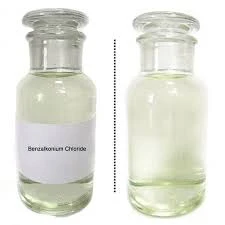Understanding the Mechanisms Behind Polyacrylamide Formation and Its Applications
The Formation of Polyacrylamide A Comprehensive Overview
Polyacrylamide is a synthetic polymer widely used in various fields, including agriculture, medicine, and environmental science. Its formation is a significant topic of interest due to the polymer's applicability and its unique properties. This article explores the key aspects of polyacrylamide formation, including the underlying chemistry, polymerization processes, and its various applications.
The Chemistry Behind Polyacrylamide Formation
Polyacrylamide is formed through the polymerization of acrylamide monomers, which possess a vinyl group that can easily undergo radical polymerization. The basic chemical structure of acrylamide (C3H5NO) includes an amide and an alkene functional group, making it a versatile building block for polymerization.
The polymerization process typically involves free radical initiation, wherein an initiator like potassium persulfate or ammonium persulfate generates free radicals in the presence of acrylamide. This initiates the chain reaction, leading to the formation of polyacrylamide chains. The reaction can be conducted in aqueous or organic solvents, with aqueous solutions being more common due to better solubility and reduced environmental impact.
Polymerization Techniques
There are several methods to produce polyacrylamide, with the most common being solution polymerization. This method allows for the precise control of temperature and concentration, leading to high molecular weight polymers. In addition to solution polymerization, other methods such as emulsion polymerization and suspension polymerization are also used. Emulsion polymerization, for instance, allows for the production of polyacrylamide in a stabilized form, creating smaller particle sizes that are beneficial for specific applications.
polyacrylamide formation

One of the critical factors influencing the properties of polyacrylamide is the degree of crosslinking. Crosslinked polyacrylamide, created by incorporating a crosslinker such as N,N-methylene bisacrylamide, forms a gel-like substance. This crosslinked version has several unique properties, such as increased viscosity, mechanical stability, and water retention capabilities, making it useful in applications like soil conditioning and hydraulic fracturing.
Applications of Polyacrylamide
Polyacrylamide's versatility results in a wide range of applications. In the agricultural sector, it is used as a soil conditioner and water retention agent, helping to improve soil structure and reduce erosion. It enhances the absorption of water and nutrients, which is particularly beneficial in arid and semi-arid regions.
In the field of medicine, polyacrylamide serves as a biocompatible material used in drug delivery systems, tissue engineering, and as a component in various medical devices. Its ability to form hydrogels is crucial in these applications, as it can mimic natural tissues, allowing for better integration and functionality.
Environmental science also relies heavily on polyacrylamide for its applications in waste treatment and pollution control. The polymer is effective in coagulation and flocculation processes, aiding in the removal of suspended particles and contaminants from water. This application is vital in industries like mining, oil recovery, and municipal wastewater treatment.
Conclusion
The formation of polyacrylamide involves complex chemical processes that yield a polymer with a wide range of desirable properties. Its ability to retain moisture, enhance soil quality, and serve in various industrial applications makes it an invaluable material in contemporary science and industry. With ongoing research and development, the potential uses and enhancements of polyacrylamide will likely continue to expand, paving the way for new innovations that can address global challenges in agriculture, health, and environmental sustainability. As the demand for efficient and effective solutions grows, the significance of polyacrylamide formation will undoubtedly remain at the forefront of scientific inquiry and practical application.
-
Pbtc Scale InhibitorPBTC: A Scale Protector for Industrial Water TreatmentNewsAug.05,2025
-
Organic Phosphonate: An Efficient Defender in the Field of Scale InhibitionNewsAug.05,2025
-
Hydrolyzed Polymaleic Anhydride: Green Pioneer in Scale Inhibition FieldNewsAug.05,2025
-
PAPEMP Polyamino Polyether Methylene Phosphonic Acid For SaleNewsAug.05,2025
-
Flocculant Water Treatment: A Pioneer in Purification in the Field of Water TreatmentNewsAug.05,2025
-
Benzyl Isothiazolinone: An Efficient and Broad-Spectrum Antibacterial Protective GuardNewsAug.05,2025





